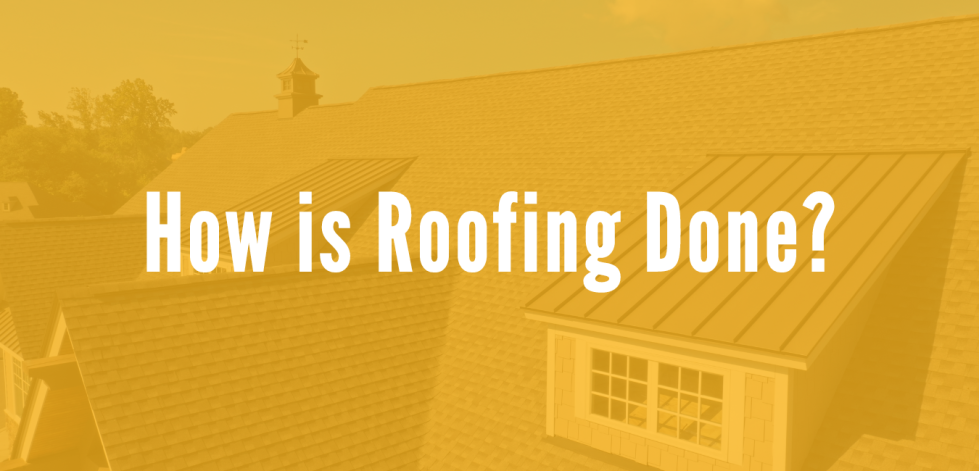Learning how roofing is done is an important step in understanding the process of replacing a roof, as well as how to maintain and repair a roof over time. Understanding the various steps involved, from inspection and assessment to removal and installation, can help you make informed decisions about your roofing needs and ensure that your roof is installed and maintained properly. Whether you are a homeowner, contractor, or simply interested in DIY projects, gaining knowledge about roofing can be a valuable investment. We’ve listed the steps in a typical roof replacement:
- Inspection and assessment– A roofing professional inspects the roof to determine the extent of damage and the best course of action for replacement. During the inspection and assessment of a roof, a roofing professional:
Starts off by evaluating the condition of the existing roof. This includes checking for signs of damage such as missing shingles, cracks, or holes. Then they inspect the decking and framing. The professional checks for signs of rot, water damage, or other structural problems. They also examine the ventilation and drainage systems by checking to see if there are any blockages in the vents or gutters and downspouts, which can cause water to build up and damage the roof. From there, the roofing professional assesses the condition of any skylights, chimneys, or other roof penetrations by looking for proper sealing and flashing around these areas to ensure that water does not leak into the building. Based on the findings of the inspection, the professional will determine whether a full roof replacement is necessary or if a repair is possible.
- Removal of the old roof– The old roof is removed, including any damaged decking or framing underneath. The roofing professionals will set up safety equipment, such as scaffolding and fall protection, to ensure the safety of everyone on the site. Then the old roofing material is carefully removed, taking care not to damage the decking or framing underneath. From there, the old roofing material is disposed of in an appropriate manner, typically by hauling it away in a dumpster or trailer. Finally, the roofing professionals inspect the decking and framing for any damage or rot, and repair or replace as needed.
The removal of the old roof is a critical step in the process of replacing a roof as it allows for any necessary repairs to be made to the decking and framing before the new roof is installed. The removal process should be performed carefully to ensure that the underlying structure is not damaged, and that the site is cleared and ready for the next stage of the replacement process.
- Repairing the decking and framing– If necessary, any damaged decking or framing is repaired before the new roof is installed.
- Installing underlayment- A layer of water-resistant material is installed to serve as a barrier and protect the roof deck. To install, the underlayment material is unrolled across the roof deck, with the protective backing facing up. Then it’s cut to fit the shape of the roof and around any penetrations, such as vents or skylights. The edges of the underlayment are overlapped and sealed to create a continuous barrier that will protect the roof deck from water. Finally, the underlayment is secured to the roof deck using roofing nails or adhesive.
This helps to prevent water from seeping into the decking and causing damage, and also provides a solid base for the new roofing material to be installed on. Underlayment should be installed carefully and in accordance with the manufacturer’s specifications to ensure that it provides the maximum protection for the roof.
- Installing the new roof- The new roof is installed, including any necessary flashing and ventilation.
- Clean-up- The roofing professional removes any debris and cleans the site, leaving the new roof ready for use.
- Final inspection- The roofing professional performs a final inspection to ensure that the roof has been installed properly and meets all necessary standards.
Contacting a professional roofing contractor can provide you with a thorough assessment of your roof’s condition and help you determine the best course of action for your specific situation. Whether you need a minor repair or a full roof replacement, a qualified roofing contractor can provide you with the expertise and experience necessary to get the job done right. Don’t wait until it’s too late, act now to protect your home and keep your roof in top condition! Contact Aspen Contracting by calling 877-784-ROOF or by visiting our website at roofsbyaspen.com.
